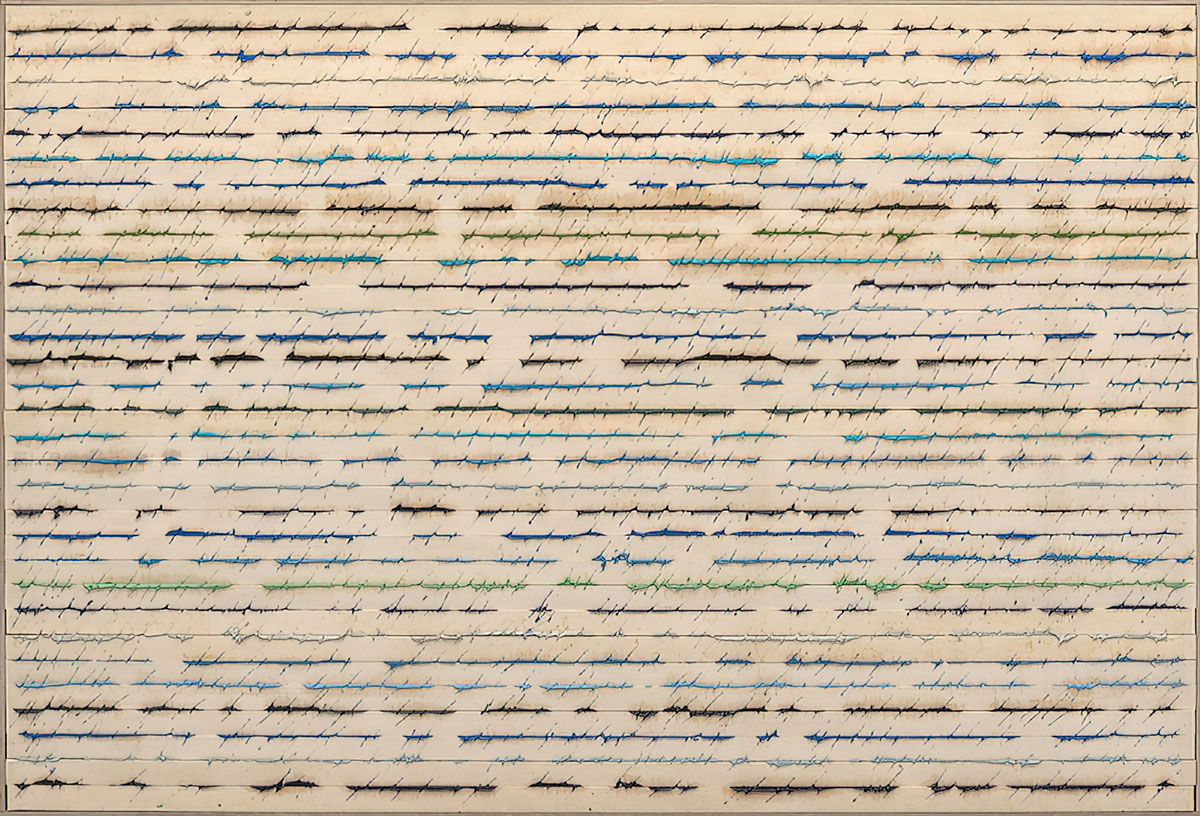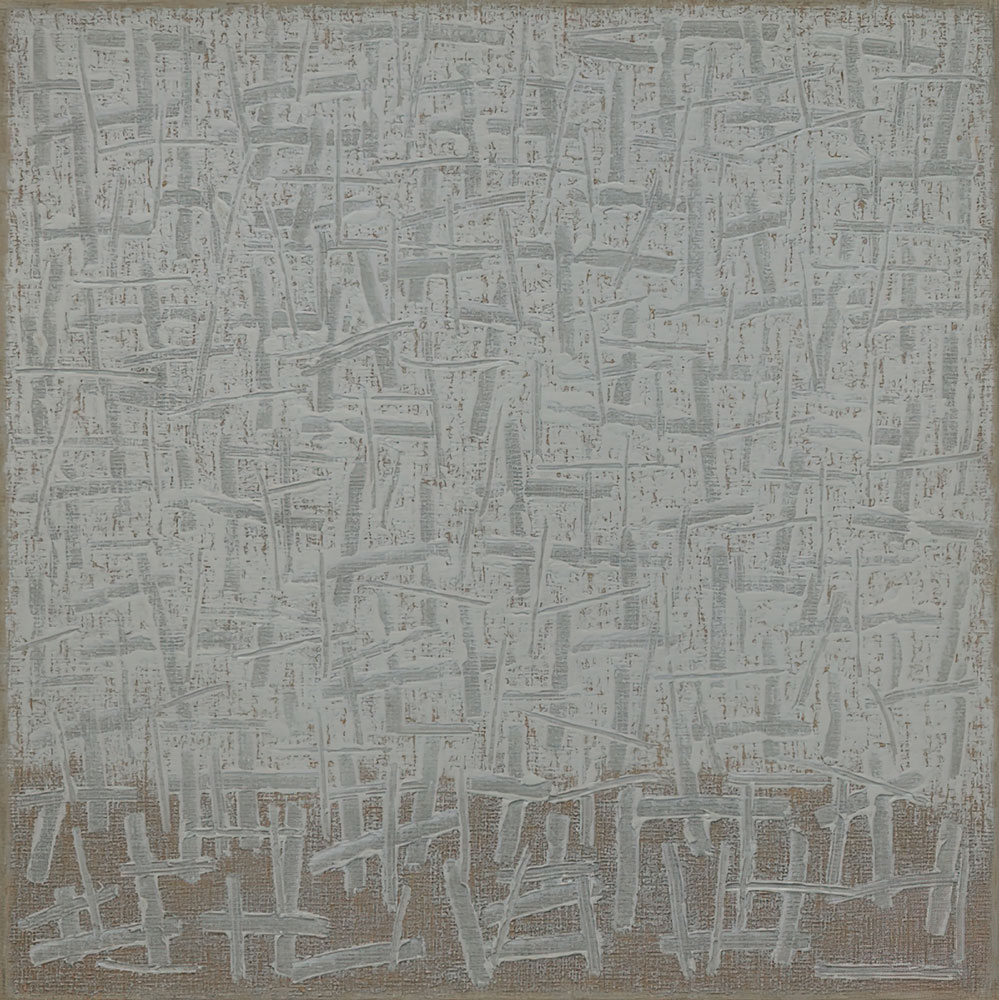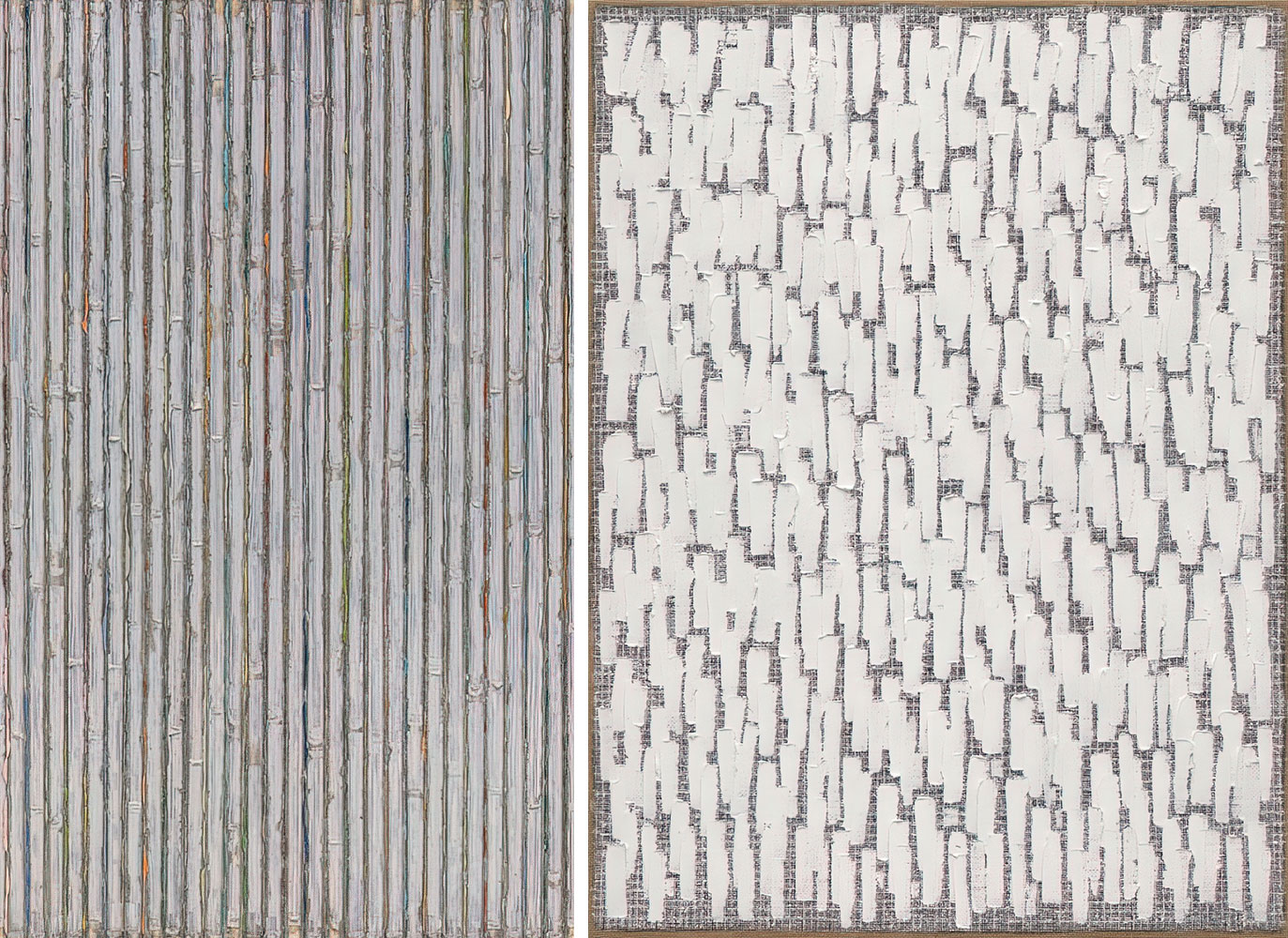ART CITIES: Seoul, Ha Chong-Hyun
 A pioneer of Korean modernism, Ha is an artist whose lifelong work illustrates his commitment to exploring the infinite possibilities and materiality of painting. His practice is defined by this passion for constructing a unique artistic language through two-dimensional works imbued with specific and highly charged material properties and energy.
A pioneer of Korean modernism, Ha is an artist whose lifelong work illustrates his commitment to exploring the infinite possibilities and materiality of painting. His practice is defined by this passion for constructing a unique artistic language through two-dimensional works imbued with specific and highly charged material properties and energy.
By Dimitris Lempesis
Photo: Kukje Gallery Archive
Ha Chong-Hyun is a leading member of the Dansaekhwa group, began his Conjunction series in 1970s post-war Korea and has dedicated his practice to this series ever since. Conjunction refers to the physical connection between the two most important elements of his practice, his methods and his materials, and how the two are intertwined, or “conjoined”. The burlap he began to substitute in place of the more traditional canvas after the Korean War allows him to approach each painting from the reverse, pushing thick paint through the loose weave. The oil paint then emerges from the front, creating a texture that has become entirely unique to Ha’s practice. Though he has maintained these practical methods for decades, Ha continues to experiment in his works, incorporating new colors and abstract patterns. Ha Chong-Hyun solo exhibition at Kukje Gallery is the most expansive of the artist’s solo exhibitions at Kukje Gallery across all three of the gallery’s spaces. Best known for his experimentation with paint and commitment to asking, “what is painting?” Ha’s exhibition showcases the outcomes of his ongoing study of color and material. The exhibition introduces works from the 1990s to the present and includes works from Ha’s signature “Conjunction” series with an emphasis on recent multicolored pieces, as well as mark the first ever showcase of the artist’s “Post-Conjunction” series in Korea, underscoring his relentlessly evolving and expanding practice. Ha began the “Conjunction” series in the 1970s, developing it as his signature style over the ensuing decades. The artist cultivated a labor-intensive and innovative technique known as “bae-ap-bub”, where he pushes oil paint through the coarse weave of the burlap canvas, from the back to the front. While this technique and the unique texture it creates remain evident in the recent multicolored “Conjunction” series, brushstrokes applied on the back of the canvas and colorful gradations incorporated by the artist reflect a more contemporary palette, as seen in “Conjunction 21-38” (2021). The work, which integrates blue and white hues, employs “bae-ap-bub” with white paint across a surface first treated with black paint, on top of which Ha has drawn vertical lines and manipulated the form and shape of the emergent media. As a final touch, the artist has added blue paint to create a work that deviates from the existing “Conjunction” works. This shift, manifest in the further richness of form and hue, reflects the longstanding relationship between Ha and his use of color. While Ha’s past works were concerned with colors found in Korean traditional roof tiles, white porcelain, and landscape to honor distinctive forms found throughout the Korean cultural milieu, the recent introduction of bright colors reflects the artist’s efforts to go beyond the parameters of Dansaekhwa, which has been a defining framework for his work during the past decades. Meanwhile, the “Post-Conjunction” series includes work that reinterprets and further explores the application of “bae-ap-bub” along with Ha’s method of composing a unique pictorial plane by manipulating the plasticity of the paint and color in uniform bands. “Post-Conjunction” works begin with cutting thin wooden sticks in linear form and wrapping each individual pieces of wood with canvas covered in ink or paint. The artist then aligns these sticks on the plane; after one wooden piece is placed within the frame of the canvas, oil paint is applied underneath or on its edges, before placing the next. Ha repeats this process until the paint has pushed through the wood in sufficient volume, to articulate the linear forms of the composition. The artist sometimes scratches the paint left on the surface with a tool in order to amplify the dynamics of the pictorial plane, as can be seen in “Post-Conjunction 11-3” (2011), or adds more paint for compositional rhythm, as in “Post-Conjunction 10-38” (2010), such variations in Ha’s working process allow his works to express a wide range of nuances. While the “Conjunction” series utilizes burlap as a two-dimensional surface, characterized by an emphasis on the paint’s material properties (especially when applied in thick layers), the “Post-Conjunction” series can be seen as inventing an entirely new pictorial plane created through the artist’s unconventional use of wooden sticks, adding a sculptural quality to Ha’s two-dimensional works. Materials used by the artist immediately after the Korean War, such as USAID burlap sacks, flour, and barbed wire, commented directly on the sociopolitical climate of the times, while those for the “Post-Conjunction” series are no longer anchored to a specific era, but instead cultivate an expanding spectrum of material exploration and open up a new dialogue between painting and object.
Photo: Ha Chong-Hyun, Post-Conjunction 11-3, 2011, Mixed media, 120 x 180 cm, Photo: Chunho An, © Ha Chong-Hyun, Courtesy the artist and Kukje Gallery
Info: Kukje Gallery, 54 Samcheong-ro, Jongno-gu, Seoul, Korea, Duration: 15/2-13/3/2022, Days & Hours: Mon-St 10:00-18:00, Sun 10:00-17:00, www.kukjegallery.com

Right: Ha Chong-Hyun, Post-Conjunction 21-201, 2021, Mixed media, 73 x 61 cm, Photo: Chunho An, © Ha Chong-Hyun, Courtesy the artist and Kukje Gallery

Right: Ha Chong-Hyun, Conjunction 21-82, 2021, Oil on hemp cloth, 117 x 91 cm, Photo: Chunho An, © Ha Chong-Hyun, Courtesy the artist and Kukje Gallery


Right: Ha Chong-Hyun, Conjunction 20-99, 2020, Oil on hemp cloth, 130 x 97 cm, Photo: Chunho An, © Ha Chong-Hyun, Courtesy the artist and Kukje Gallery
